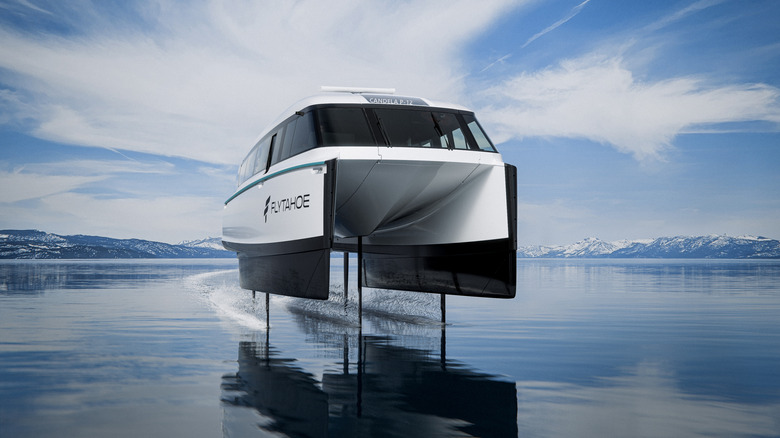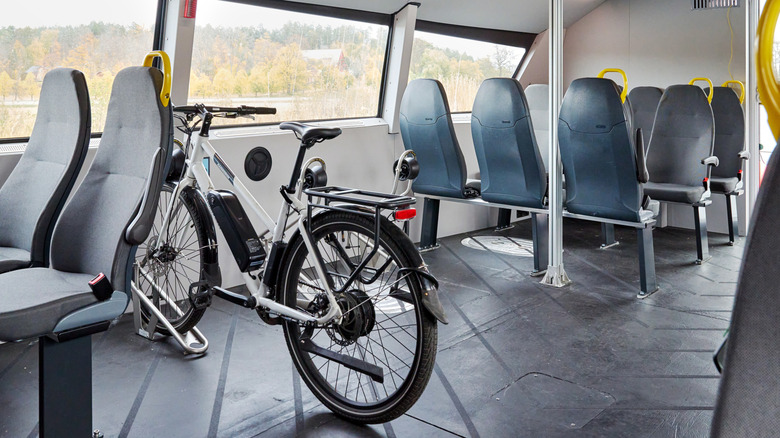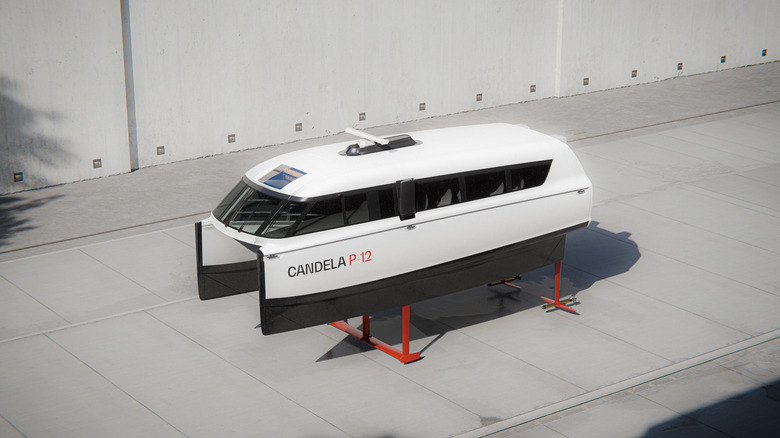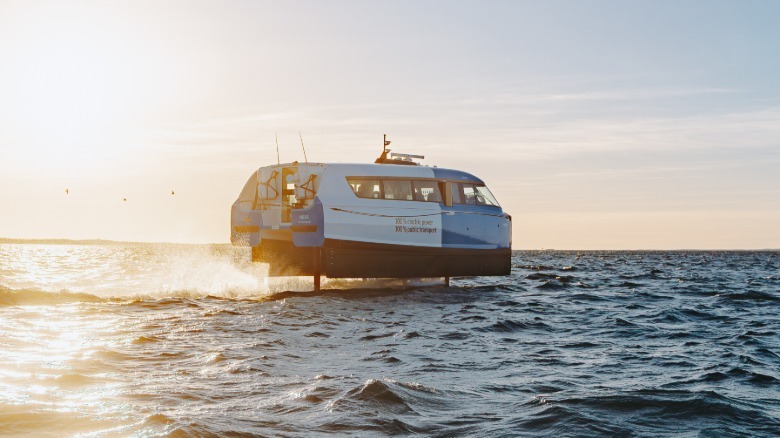Electrification has been the hot topic of the automotive industry for several years now, but the transition away from fossil fuels has proven difficult and quite political. In the nautical world, electric boats have silently cruised along lakes and in marinas since the late 1960s, but never with any remarkable speed or range. Candela, a Swedish boat maker, is leading the modern nautical electric revolution, first with its C-8 Daycruiser hydrofoil which uses Polestar batteries, and now with the P-12 electric hydrofoil ferry. The P-12 is the world’s fastest and longest-range electric passenger vessel, and it achieves this feat via an ultra-efficient electric C-Pod propulsion system and hydrofoil technology to vastly reduce hydrodynamic drag. Despite what Donald Trump thinks, these boats are safe, efficient, and fast.
A P-12 ferry called Nova is already in service in Stockholm, Sweden, where its daily routes create 98% fewer carbon emissions than diesel ferries while traveling faster than not only diesel ferries, but also faster than cars and buses. The hydrofoil design virtually eliminates wakes that limit the permitted speeds of diesel ferries, so the average daily commute time from the Ekerö suburb into Stockholm’s city center is cut down from 55 minutes to just 25 minutes on Nova. Plus since it’s cheaper to fuel, operating costs are about 50% less than diesel vessels.
Not science fiction
Candela’s P-12s cruise at a speed of 25 knots or about 30 mph, which may not sound like much but is double the speed of a typical U.S. ferry, and it can travel around 40 nautical miles at that speed. The P-12 is designed with 30 seats, and has room to store bikes, skis, or other gear.
The first Candela P-12 coming to the United States will find a home on the second-deepest lake in the country, California’s massively popular Lake Tahoe. It’s expected to offer zero-emission, 30-minute rides across the lake, which is about half the time it takes to complete the journey around the lake in one of 20,000 daily car trips. The ferry won’t cause any ecosystem disruption either, thanks to the impossibility of oil spills and its lack of shoreline-damaging wakes, and since it rides above the water it’s impervious to choppy waters making it a great choice even for folks who suffer from sea sickness.
Its battery is less than twice as big as a single Hummer EV’s battery
You’d be forgiven if you assume that a 40-foot, 30-passenger ferry would require a tremendous battery, but that’s another challenge that’s solved by the P-12’s hydrofoils. When in motion, the hull of the P-12 rises up out of the water, where it’s held up by five narrow struts that connect the hull to the hydrofoils and propellers that stay below the surface. Those propellers are powered by two Candela C-Pod motors that produce a combined peak power output of 429 horsepower. Once the hull is out of the water, the C-Pods don’t need much power to keep the ship moving thanks to the minimal drag caused by the struts.
The P-12 is powered by a 336-kWh battery. That’s less than twice the size of the largest battery available in the Cadillac Escalade IQ, GMC Hummer and Sierra EV, and Chevy Silverado EV, which are all powered by a 205-kWh battery pack. The P-12 can DC fast charge at speeds up to 200 kW, and Nova uses two EV superchargers at the port to recharge after the morning and evening commuter rushes. P-12s can run for about two hours before requiring about an hour to recharge, making it totally feasible for most ferry routes as long as charging infrastructure is sufficient.
What’s the catch?
So far, there doesn’t seem to be a catch. As long as the route being traveled is within the P-12’s 40-mile cruising range and there’s access to DC fast chargers, there is no downside unless you’re in the oil industry. The P-12’s price was competitive with diesel vessels at around €1.7 million when it was first released in 2023, and drastic fuel expenditure savings of about 90% when compared to diesel vessels will add up quickly. Plus, it emits 95% fewer CO2 emissions than those diesel ferries, so it’s faster, cheaper to operate, and more environmentally friendly than its diesel counterparts.
In Stockholm, Nova is actually converting car commuters into ferry riders, something that is very challenging for city planners. On average, Nova operates with about 80% occupancy with many trips fully booked. When Lake Tahoe gets its P-12, those 20,000 daily car commutes around the lake may be drastically reduced, which will not only benefit congestion but also benefit Lake Tahoe’s world-renowned beauty, as road debris negatively impacts the lake’s waters. And because the lake never freezes, the P-12 will be able to operate year-round, serving the region’s famous ski resorts in the winters as well as tourists in the summers.





